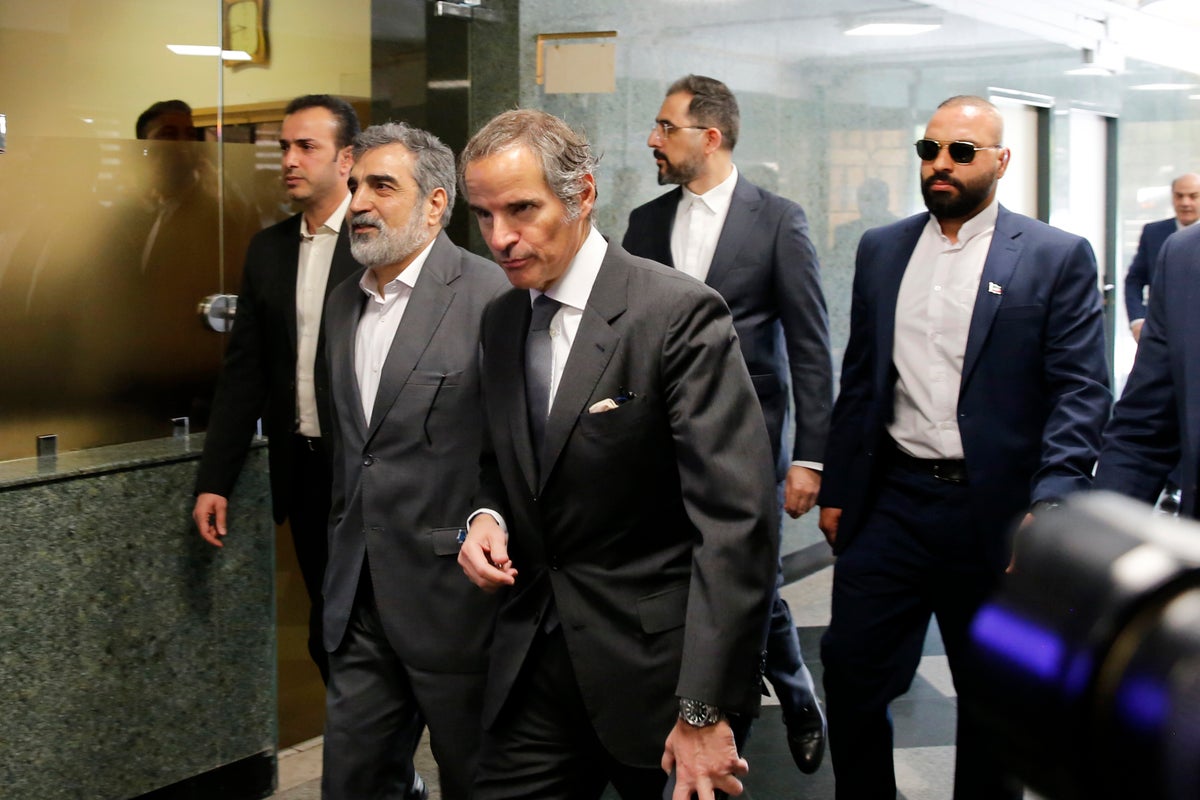
The head of the U.N. nuclear watchdog was meeting with officials in Iran on Saturday, days after it was revealed that the country had enriched particles of uranium to near weapons-grade, raising new alarm over its long-disputed nuclear program.
Rafael Mariano Grossi, the head of the International Atomic Energy Agency, declined to comment on his discussions during a press conference with the head of Iran's nuclear program, saying the delegation's work was still ongoing.
“It's an atmosphere of work, of honesty and cooperation," Grossi said. He was expected to speak with reporters again upon his return to Vienna later on Saturday.
Earlier this week, the Vienna-based International Atomic Energy Agency reported that uranium particles enriched up to 83.7% — just short of weapons-grade — were found in Iran’s underground Fordo nuclear site.
The confidential quarterly report by the IAEA, which was distributed to member states on Tuesday, came as tensions were already high amid months of anti-government protests in Iran and Western anger at its export of attack drones to Russian forces fighting in Ukraine.
The IAEA report says that inspectors in January found that two cascades of IR-6 centrifuges at Iran’s Fordo facility had been configured in a way “substantially different” to what had been previously declared. The IAEA took samples the following day, which showed particles with up to 83.7% purity, the report said.
The IAEA report only spoke about “particles,” suggesting that Iran isn’t building a stockpile of uranium enriched above 60% — the level it has been enriching at for some time. However, the agency also said in its report that it would “further increase the frequency and intensity of agency verification activities” at Fordo after the discovery.
Iran has sought to portray any detection of highly enriched uranium particles as a momentary side effect of trying to reach a finished product of 60% purity. However, experts say such a great variance in the purity even at the atomic level would appear suspicious to inspectors.
The chief of Iran’s nuclear program, Mohammad Eslami, acknowledged the findings of the IAEA report at the press conference with Grossi but said it did not amount to 84% enrichment. He said the “ambiguity” of the findings had been resolved.
Nonproliferation experts say Tehran has no civilian use for uranium enriched to even 60%. A stockpile of material enriched to 90%, the level needed for weapons, could be quickly used to produce an atomic bomb if Iran chooses.
Iran’s 2015 nuclear deal with world powers limited Tehran’s uranium stockpile and capped enrichment at 3.67% — enough to fuel a nuclear power plant.
The U.S. unilaterally withdrew from the accord in 2018, reimposing crushing sanctions on Iran, which then began openly breaching the deal's restrictions. Efforts by the Biden administration, European countries and Iran to negotiate a return to the deal reached an impasse last summer.
Iran long has denied ever seeking nuclear weapons and maintains its program is peaceful, but is widely believed to have had a nuclear weapons program until 2003.
Grossi’s last visit to Iran was in March 2022.







